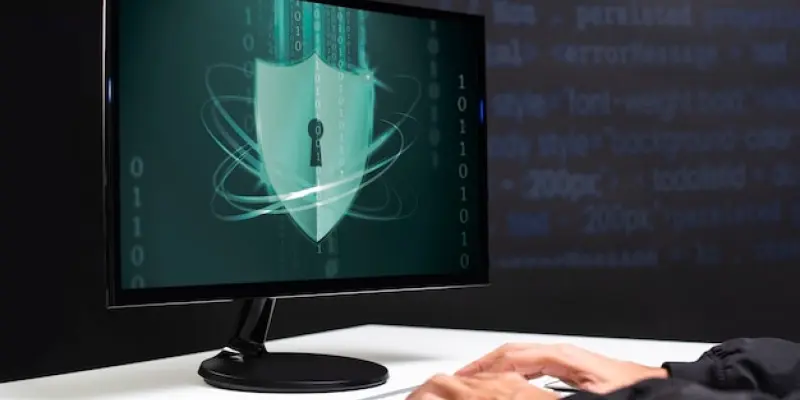In a rapidly evolving tech landscape, a recent VMware Tools vulnerability affecting both Windows and Linux versions has raised significant security concerns. Designated as CVE-2025-22247, this flaw enables attackers, even those with restricted privileges, to manipulate files within virtual machines, effectively compromising their security. Such vulnerabilities highlight weaknesses in virtualization environments and heighten the risks of insecure operations through substantial attack chains or possible privilege escalations. The urgency to remedy this situation is underscored by the vulnerability’s CVSSv3 base score of 6.1, designating it as a moderate-severity risk. With no workarounds available, VMware users face pressing concerns over virtual machine integrity unless immediate action is taken.
Security Risks and Implications
As virtualization environments increasingly accommodate multiple tenants on a single physical infrastructure, the repercussions of such vulnerabilities are pronounced. A notably alarming aspect is how the flaw could be exploited to initiate larger attack chains within shared environments. As these settings often contain sensitive information, the potential for unauthorized access and privilege escalation presents severe threats. The disclosure of this weakness by security researcher Sergey Bliznyuk serves as a critical insight into ongoing vulnerabilities within VMware’s suite. Historically, VMware has been vigilant about addressing vulnerabilities; however, the discovery of CVE-2025-22247, alongside previous issues such as the TOCTOU flaw in ESXi and Workstation platforms, reflects persistent challenges faced by virtualization software providers. These vulnerabilities necessitate a reevaluation of current security protocols, especially as the reliance on virtualized infrastructures intensifies. It emphasizes the imperative for robust security measures to mitigate risks and circumvent the possibility of lateral movements between virtual machines. As virtualization becomes foundational to modern IT operations, ensuring the security of these environments proves crucial not just for individual organizations but for the industry’s adaptability and resilience altogether. Administrators need to prioritize patching efforts and remain informed about potential security lapses. Such vigilance furthers the reduction of potential points of exploitation and upholds the integrity of IT ecosystems reliant on dependable virtualization solutions.
Response and Recommendations
In response to these developments, VMware has swiftly addressed the vulnerability by releasing updates: version 12.5.2 for Windows and Linux systems and a specialized fix for Windows 32-bit within version 12.4.7. This proactive approach underlines the significance of addressing such flaws promptly. For Linux users, patches are provided through respective vendors, ensuring that systems leveraging open-vm-tools are equally safeguarded. VMware Tools, fundamental in optimizing virtual machine performance, facilitate crucial operations such as graphics improvements, time synchronization, and file sharing. Therefore, keeping these tools secure directly correlates with the stability and performance of virtual environments. As organizations aim to safeguard their infrastructures, the importance of deploying these patches cannot be overstated. Multi-tenant environments are particularly vulnerable to lateral threats, necessitating immediate implementation of updates to avert potential crises. While previous security patches like March 2025’s CVE-2024-43590 underscored security vigilance, this latest vulnerability reiterates the persistent battle against exploitation and security flaws within virtualization software. IT administrators are strongly urged to prioritize patching these vulnerabilities as an indispensable step in protecting the integrity of their virtual landscapes.
Moving Forward and Precautions
As virtualization continues to integrate multiple tenants within a single physical infrastructure, the impact of vulnerabilities becomes increasingly significant. A concerning element is how these flaws might be exploited into larger, more intricate attack chains in shared environments. Such settings often harbor sensitive information, raising the risks of unauthorized access and privilege escalation. Sergey Bliznyuk’s disclosure of this vulnerability offers critical insight into the persistent flaws within VMware’s suite. Though VMware has a history of addressing vulnerabilities proactively, discoveries like CVE-2025-22247 and past issues such as the TOCTOU flaw in ESXi and Workstation platforms highlight ongoing challenges for virtualization software providers. These vulnerabilities require a reevaluation of security protocols, especially as virtualized infrastructures become more integral to modern IT operations. This underscores the necessity of comprehensive security measures to mitigate risk and prevent lateral movements between virtual machines. Moreover, as virtualization forms the backbone of today’s IT systems, maintaining its security is vital for organizations and the industry’s resilience and adaptability. It demands focused efforts on patching and awareness to reduce exploitation and preserve IT ecosystem integrity.

